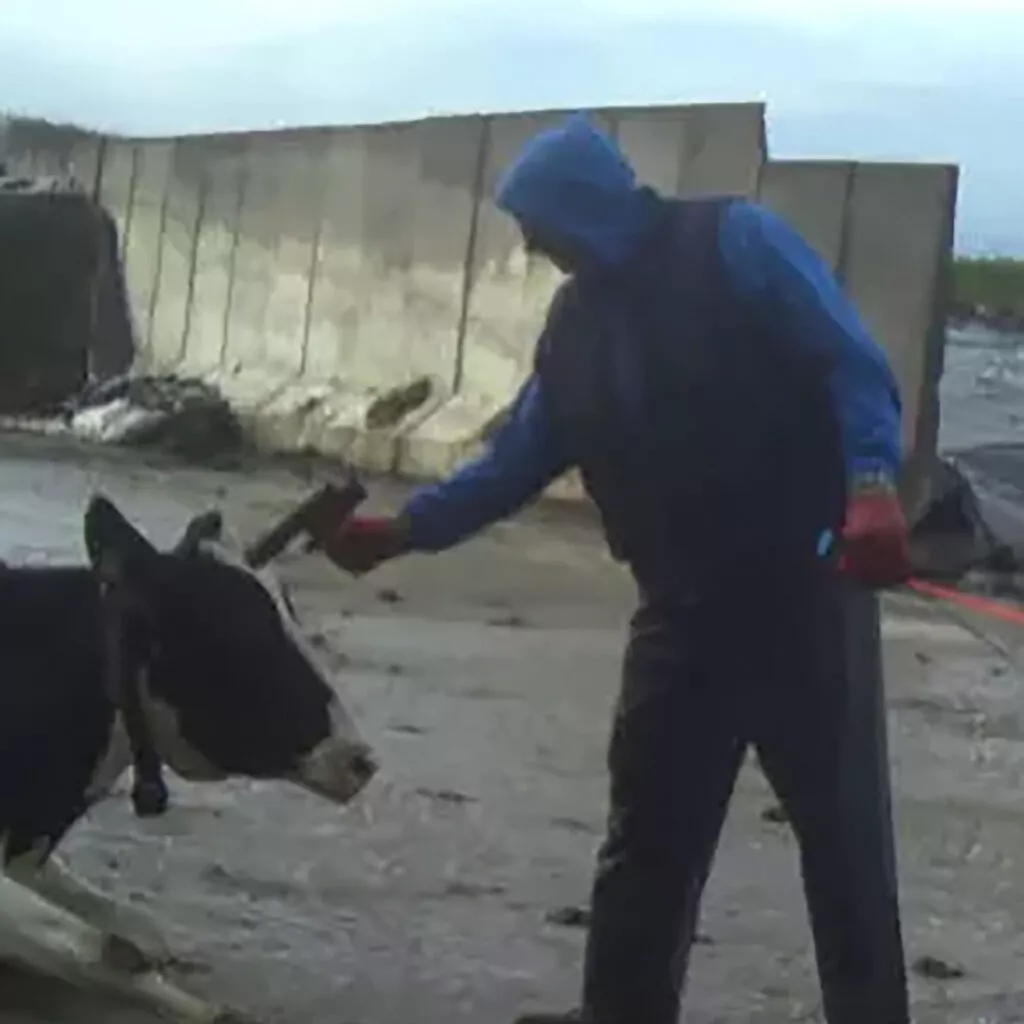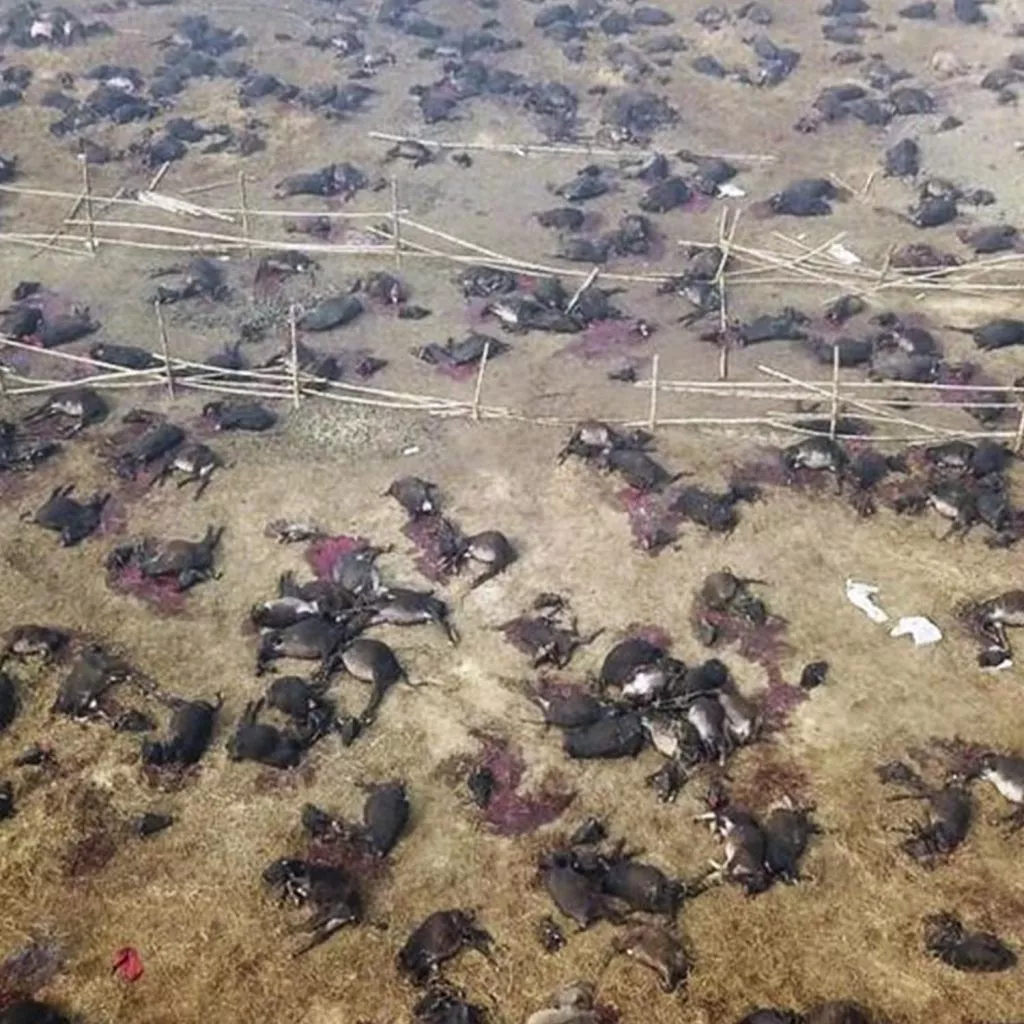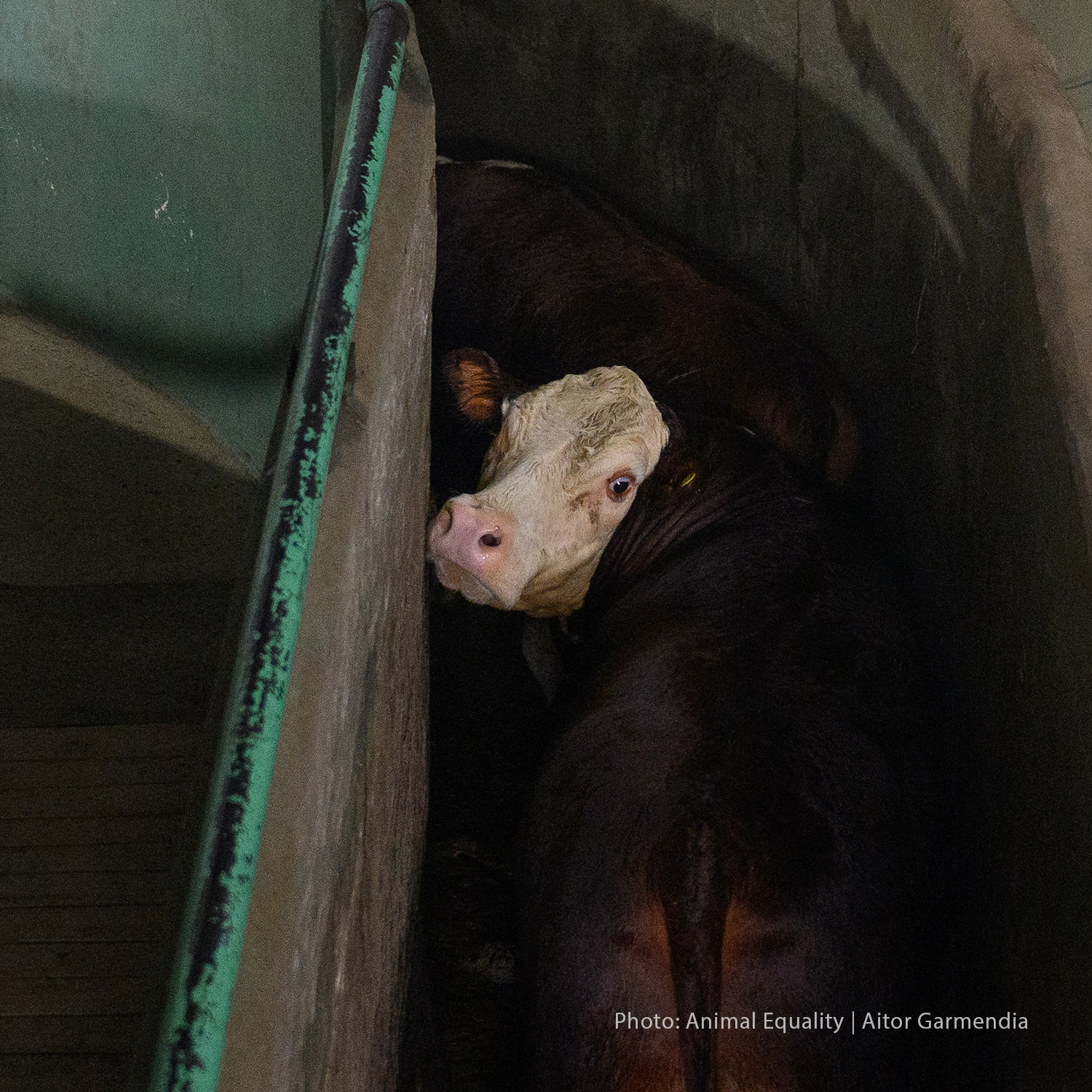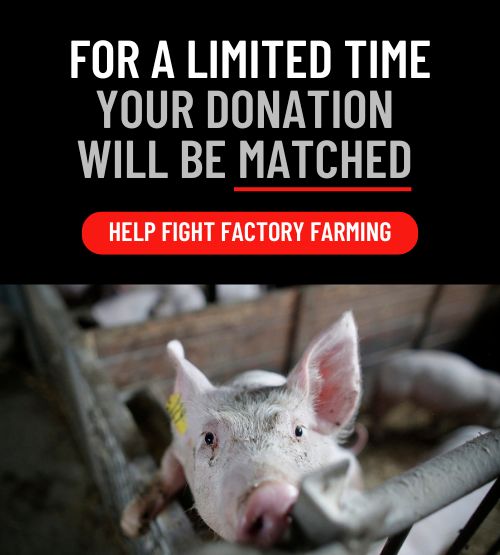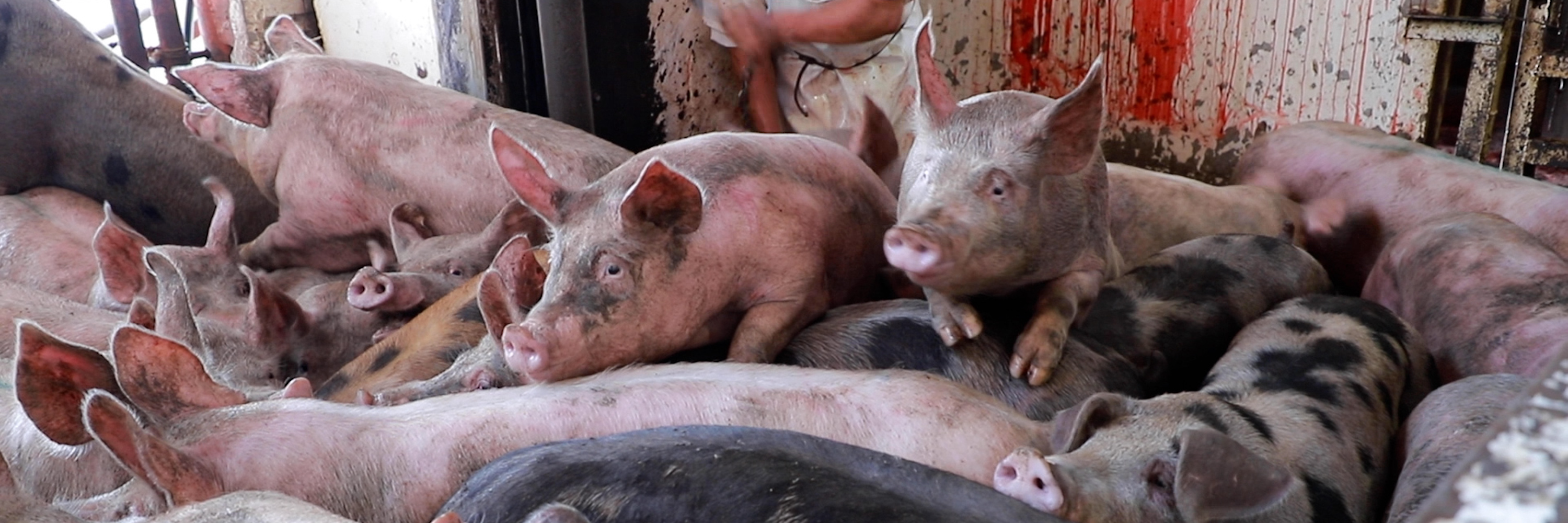
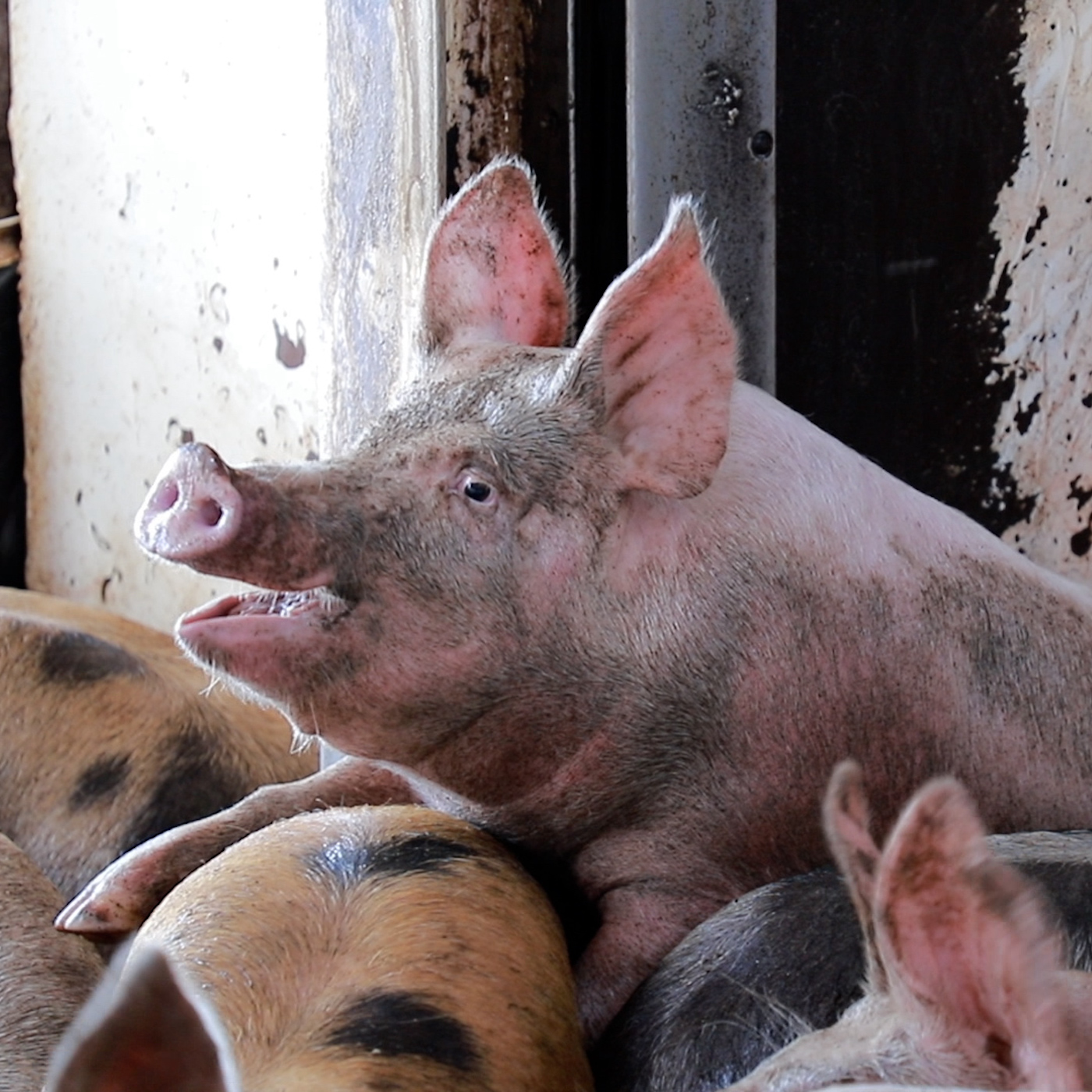
5 common slaughterhouse practices you need to know about
Do you know what takes place behind the concrete walls of a slaughterhouse? Are you familiar with live transportation, forced fasting, and stun guns?
If you answered “no” to either of these questions, that is not by accident. The meat, dairy, and egg industries have spent billions of dollars trying to hide their most common abuses from consumers.
But why does the industry go to such great lengths to hide its activities? The answer is one word: profits.
Here at Animal Equality, we believe consumers (and animal lovers like you) deserve to know the truth about what lines our grocery store shelves. Are you ready to uncover the industry’s secrets?
1. Forced fasting
To ensure no traces of food remain in their digestive systems, the industry stops feeding animals up to 24 hours before they are sent to slaughter. This speeds up processing at the slaughterhouses.
Crammed into trucks without food or water, animals travel long distances – often for days – before reaching slaughterhouses. For many, this will be the first and last time they see sunshine because they have been confined in factory farms their entire lives.
For chickens and hens, the journey to the slaughterhouse usually takes place at night to minimize activity and alertness.
Many of these animals will not make it to the slaughterhouse, succumbing to disease, exhaustion, thirst, or trampling by other animals in the crowded trucks.

2. Inhumane transportation
Crammed into trucks without food or water, animals travel long distances – often for days – before reaching slaughterhouses. For many, this will be the first and last time they see sunshine because they have been confined in factory farms their entire lives.
For chickens and hens, the journey to the slaughterhouse usually takes place at night to minimize activity and alertness.
Many of these animals will not make it to the slaughterhouse, succumbing to disease, exhaustion, thirst, or trampling by other animals in the crowded trucks.
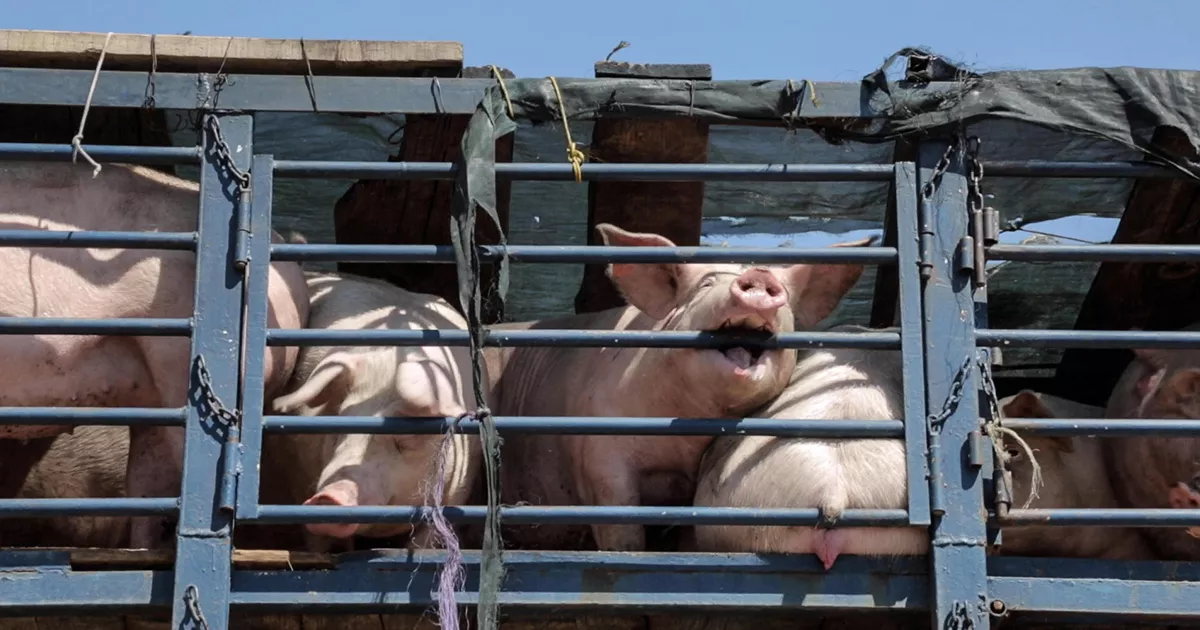
3. Watching and waiting for the end
For one to two days, animals wait their turn for slaughter. Workers often beat the confused animals with heavy metal objects out of frustration and anger.
Some animals, such as pigs and cows, watch their peers die in front of them, increasing their anxiety as their own times near.
They will panic and run for an escape, only to be cornered and killed.
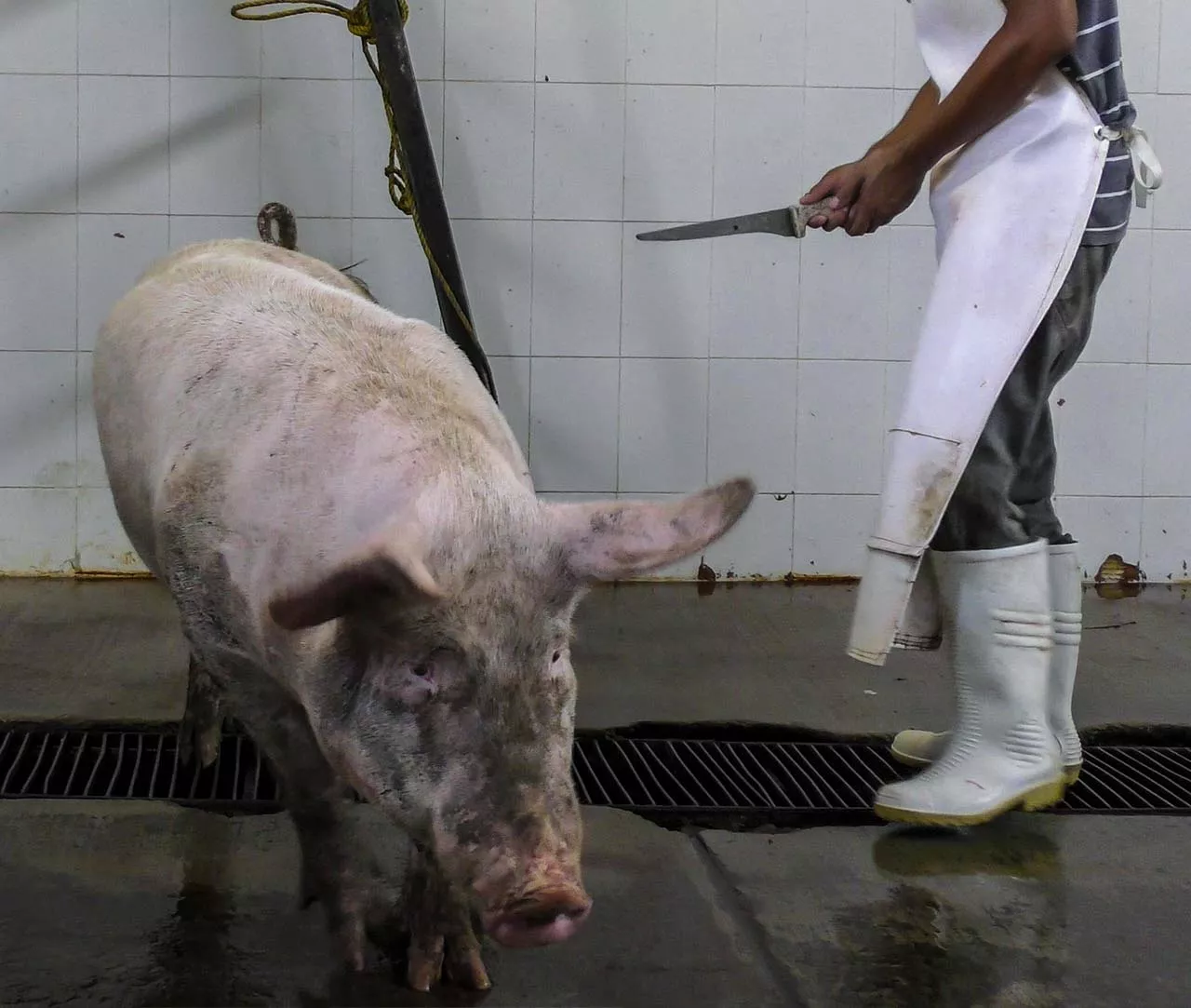
4. Electrocution
To render them unconscious before slaughter, pigs are electrocuted in their temples.
Meanwhile, hens and chickens pass upside-down through electrified water, and cows’ skulls are drilled with guns that release retractable bullets into their brains.
These electrocution methods often fail, leaving many animals fully conscious while they are slaughtered.
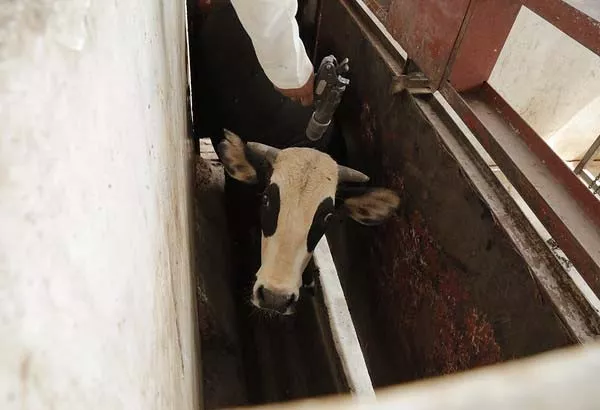
5. Cruel death
Hung upside down and decapitated, animals will bleed to death as the slaughterhouse workers process their meat as quickly as possible. Because slaughterhouses “process” more than 50,000 animals per week, their operations are similar to an assembly line.
Cows and pigs – who weigh hundreds or even thousands of pounds – are lifted from the floor by their rear legs as their bones, muscles, and tendons tear apart. Their throats are slit, often multiple times.
Similarly, chickens and hens are hung upside down on conveyor belts and mechanically slaughtered by machines.
After their throats are slit, some animals will still survive for minutes as their bodies are drained of blood, skinned, and carved. Many pigs will be fully conscious as they are thrown into scalding water to remove their hair.
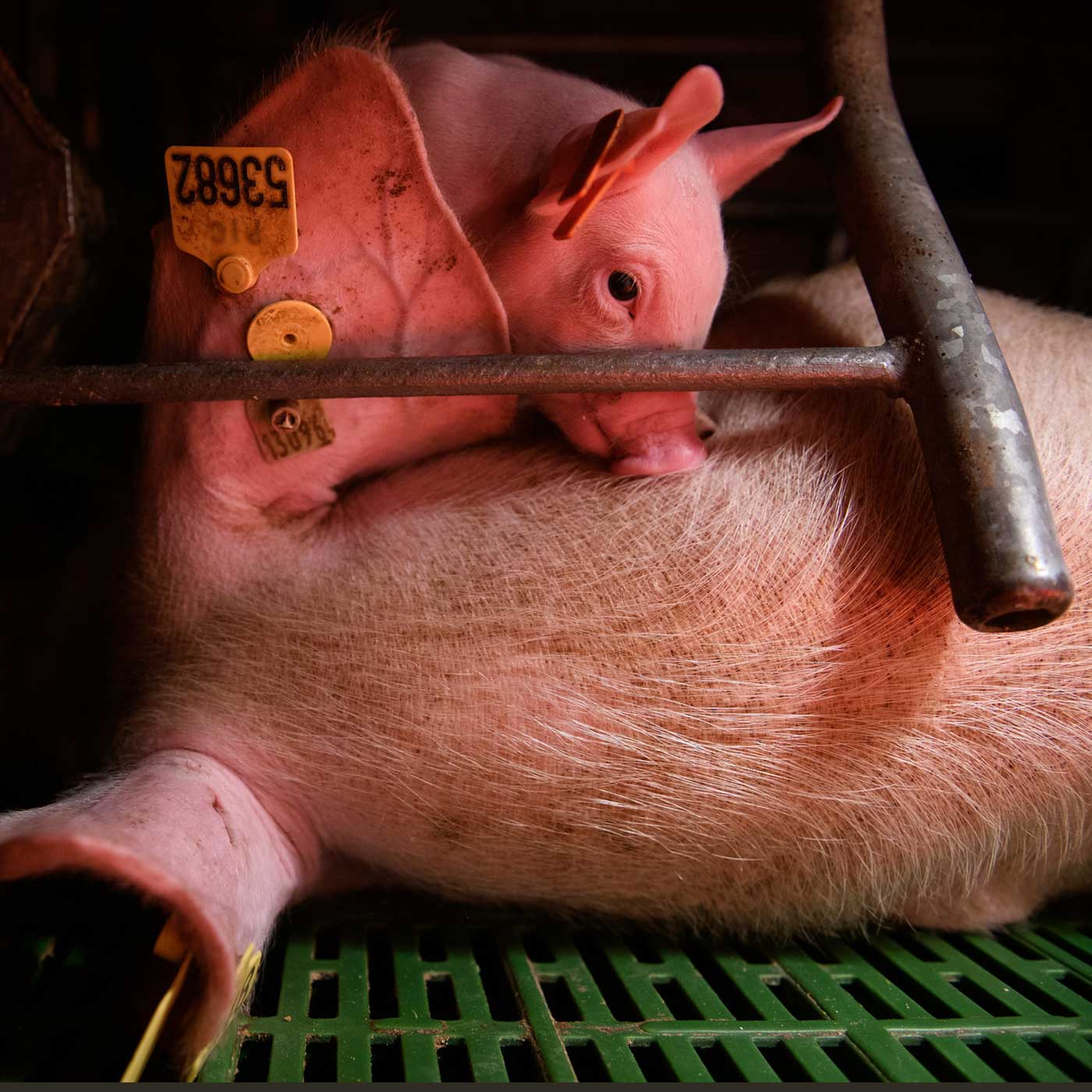
WILL YOU STEP UP FOR HER?
Her mother’s life was spent in a cage. She will suffer the same fate. But you can change this for millions of animals, currently trapped in factory farms.
Your support makes our investigations, campaigns, and legal work possible .
Only $25/month impacts 1,300 animals in a year.
How You Can Help Animals Inside Slaughterhouses:
The lives of animals in slaughterhouses might remind you of a horror film. But the good news is that these horrors are not inevitable.
With your help, animal cruelty can become a distant memory from the past. In fact, millions of people around the world have already swapped meat, dairy, and eggs for cruelty-free foods.
You can join them today as you discover the delicious, diverse, and satisfying world of plant-based eating.
Do you want to take your commitment a step further? You can also sign our petition to end factory farming once and for all. Better yet, share it with your friends and family today!
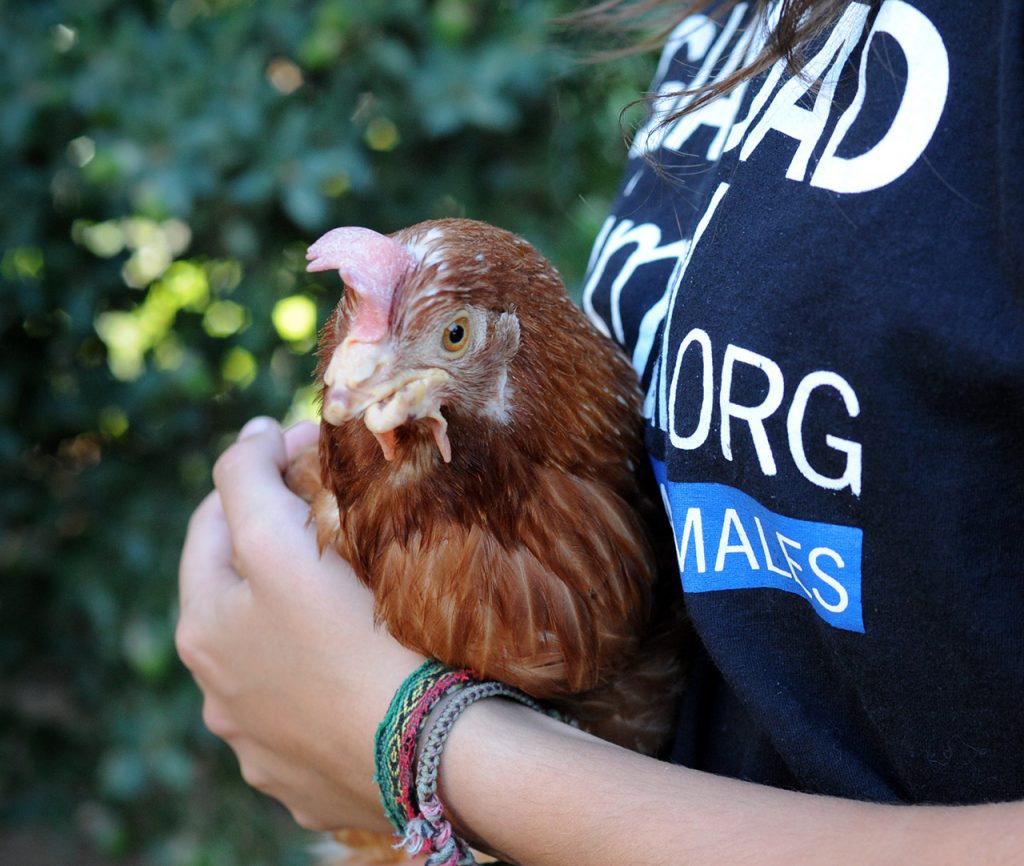
LIVE KINDLY
With rich emotional lives and unbreakable family bonds, farmed animals deserve to be protected.
You can build a kinder world by replacing animal food products with plant‑based ones.
Recommended
